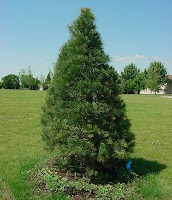-trees, herbs, bushes, grasses, vines, ferns, mosses, and green algae
-scientific study of plants is called botany
-350,000 species of plants
Body plan-
-Multicellular with cell walls made of cellulose
Divergent event/evolution-
-There are claims that all plants evolved from a single type of algae that originally came from bacteria
-Evolved through endosymbiotic events between 2500 and 1000 million years ago
-Main difference is the cell wall and chloroplasts that allow plants to perform photosynthesis
Metabolism-
-Autotrophic – able to make their own source of energy (glucose) from the sunlight, water, and carbon dioxide (photosynthesis)
Digestion-
-Intracellular – use digestive enzymes to break down food
-Absorb nutrients from digested food
Circulation-
-Gases enter and exit plants through stomata in leaves
-Water and dissolved minerals enter plants through their roots from the soil
-Travel upward in the plant in xylem vessels
-Transpiration – evaporation of water from leaves
-Water column stays intact because of cohesion property of water
-Carbohydrates travel downward in phloem
-Water pressure forces substances from cell to cell
Respiration-
-Passive – releases energy that is captured and stored in plants
-Energy stored in the form of glucose is released for use in plant metabolism
-Glucose is broken down, releases carbon dioxide
-Glycolysis
-if oxygen is present, products will be used in mitochondria
-if oxygen is not present, fermentation occurs
-Light and dark reactions (photosynthesis)
-light reactions use light energy from the sun and water to produce ATP and NADPH
-dark reactions (Calvin Cycle) uses the ATP and NADPH from the light cycle and carbon dioxide to produce G3P that is used to produce sugars
Nervous-
-no brain, but DNA in the nucleus codes for proteins that allow all cell functions to occur properly
Reproduction-
-Asexual
-kalanchoe leaves perform mitosis at meristems along their leaf margins that produce little plants that fall off and can be independent
-rhizome underground stems arch over and take root at their tips, growing a new plant
-Sexual
-sporophytes, conifers (staminate and ovulate cones), flowers (pollination)
Examples-
-Rosaceae Rosa
-Pinaceae Pinus
Phylum: Bryophyta
-Non-vascular plants – cannot transport fluids through their bodies
-Must rely of surrounding moisture to do this job for them
-Lay foundations for other plant growth, prevent erosion, and contribute to green appearance of forests
-Reproduce by spores, never have flowers
-Grow low to the ground, on moist rocks, and on other plants
-Example - Moss
Phylum: Coniferophyta
-Reproduce from seeds instead of spores
-Seeds are “naked” – not covered by an ovary
-Seeds are produced in a cone-like structure called a conifer
-Never have flowers
-Have needle-, scale-, or awl-like leaves
-Grow in extreme conditions, can survive in extreme cold
Phylum: Anthophyta
-Flowering plants
-Class: Monocotyledonae
-Have an embryo with a single seed leaf
-Narrow leaves with parallel veins and smooth edges
-Hollow or soft stems
-Flowers are arranged in threes
-Example - Orchids
-Class: Dicotyledonae
-Presence of two seed leaves
-Broad leaves with net-like veins
-Example - Rhododendron catawbiense






No comments:
Post a Comment